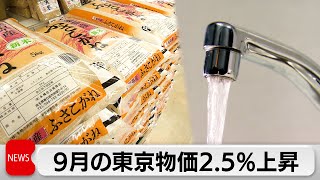While corporate profits in Japan continue to reach record highs, employee wages remain stagnant, leaving a growing segment of the workforce struggling. Since the collapse of the bubble economy, non-regular employment has steadily increased, creating a widening gap between regular and non-regular workers.
Today, 15.4% of the population earns less than half the median standard of living, marking the second-highest proportion among G7 countries after the United States. Meanwhile, Tokyo consumer prices rose 2.5% in September compared with a year earlier. The index excluding fresh food—often subject to sharp fluctuations—reached 110.0 across the capital’s wards, with the pace of growth remaining unchanged from the previous month.
In the corporate sector, Panasonic Holdings will begin soliciting early retirement applications next month at one of its core operating companies as part of broader restructuring efforts. Meanwhile, Toyota has started demonstration trials at its experimental city project known as Woven City. As of September 25th, several employee households have moved in to test how AI and autonomous driving technologies can be integrated into everyday life.
Japan currently counts only eight unicorns—unlisted startups valued at over 150 billion yen—compared with 690 in the United States. It has yet to produce a single “hectocorn,” a term used for companies worth more than 100 billion dollars, such as ByteDance’s TikTok, OpenAI, or SpaceX.
On the international front, Japan and Saudi Arabia announced a new memorandum of understanding for economic cooperation on September 24th at the Osaka-Kansai Expo. The agreement places strong emphasis on expanding the entertainment and content industries.
In local news, residents of Settsu City, Osaka Prefecture, have decided to file for pollution mediation against chemical manufacturer Daikin Industries. This action follows the discovery of per- and polyfluoroalkyl substances (PFAS) in the groundwater near the plant, some of which are suspected to be carcinogenic.
https://newsonjapan.com/article/147032.php
